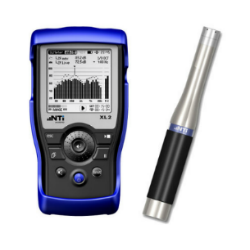Sound insulation testing or an Acoustic survey as we prefer to call it in the Fenestration industry is a test carried out to ensure your installation demonstrates acceptable levels of airborne sound insulation performance outlined in approved document E of the Building Regulations or to the level that your installation company advertises.
What is Airborne testing?
An airborne test measures the resistance to the passage of airborne sound through a separating window or door. It uses a loudspeaker placed on the outside of the property which produces a steady level of pink noise. This provides an indication of the performance of the partition for a variety of different sounds; this is because pink noise consists of an even level of sound in all frequencies. The level of noise produced by the loudspeaker is measured on both sides of the window or door being tested. The difference between the levels measured on each side shows the amount of sound stopped by the window or door. This provides the airborne sound insulation result.
In most instances we use a loudspeaker with a sounder / pitch of 105 Decibels and as such we will advise these tests are carried out between 09:00 – 17:00 so as not to cause unnecessary disturbance to neighbours.
Base Line Data
If we are to determine that your new windows and doors are operating as they are intended too we will have to collect information from the originator. This information is usually gleaned either from the installing companies literature or from the IGU manufacturer / glass processor. We class this detail as Base Line Data.
We are often engaged by householders that are concerned that the new Fenestration installed appears to be allowing more ‘noise’ through than those that they replace. Often simple sash alignment or perimeter expansion void insulation can resolve this issue but our assessor needs to collect the data of the windows that were removed at the point of undertaking the airborne test. In this instance we class this as Base Line Data.
If BLD is not available we refer to the installing companies literature, IGU manufacturer data or if non of these details are available we use Pilkington’s Spectrum software to simulate this [assuming the assessor can verify the IGU composition {or similar} and the configuration is possible within the software].

